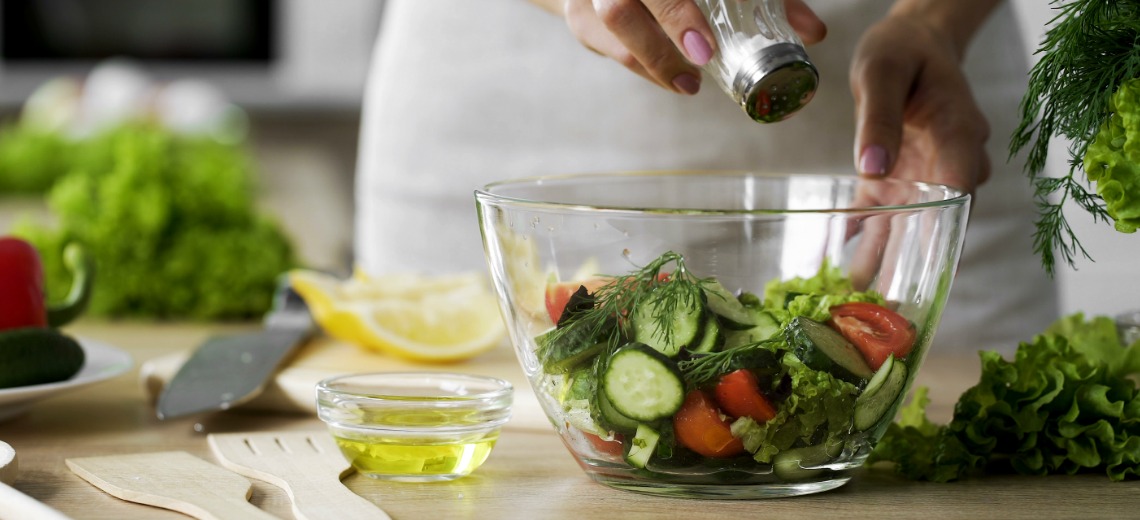
**When the right ingredients are included, a salad can be a nutritious, satisfying meal.
Follow these guidelines to make sure yours stacks up.
Fill your plate with 1-2 handfuls of leafy green vegetables. The darker the green, the more nutritious. Here are examples:
In the midwest Spring is an amazing time for greens because you can get locally grown fresh greens during the cooler months of Spring.
Add a handful of vegetables and fruits in a variety of colors, such as:
Choose a combination of 3 oz meat, ½ cup beans, 1 oz nuts, and 1 oz cheese. If choosing two sources of protein, use only a half-size portion of each. Some suggestions for protein include:
Avoid choosing light, low-fat and fat-free dressings as these are typically higher in carbs.
Here are some ways to add extra flavor to your salad:
Avoid choosing light, low-fat and fat-free dressings as these are typically higher in carbs.
This often comes from salad toppings such as:**
Remember, the trick to eating healthy is having healthy foods in the house, and not bringing non healthy foods into the house.
At Figure Weight Loss we have been helping people just like you permenently lose weight and live healthier fun lives.
Together We Can.